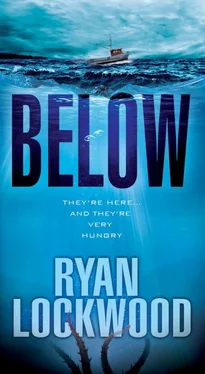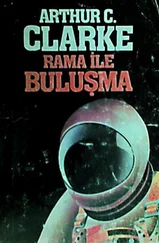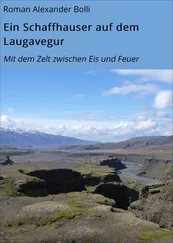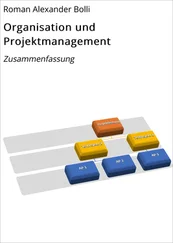“I don’t know about water, but I do know she can fire ink outta that thing.”
Val smiled. “Right. When she’s in a flight mode, she produces ink that also is emitted from the funnel… along with all of her waste.”
“Hmm. I better clean my boat again. She has ten arms, right?”
“Actually, she has eight arms, like an octopus, but unlike octopi, squid also have two longer tentacles used to capture prey.” Val ran her hands down the longer appendages extending a foot farther down the table than the arms. “These two tentacles, or ‘whips,’ are really quite amazing.”
“They look like leaves.” The tubular appendages each ended in a structure shaped like a large tree leaf.
“They do, don’t they? A squid can fire them out quite far from its body to latch on to a fish or other prey with the suckers. The arms”—Val picked up the end of one of the arms, which Sturman thought looked like short, thick snakes—“are then used to subdue the prey and draw it into the beak.”
He felt the ends of the tentacles. “Wow. They’re pretty sharp.”
“Each one contains hundreds of small teeth to hold on to slippery prey.” Val grunted as she lifted several of the shorter, sucker-lined arms up to reveal a small circle at their juncture. “And here’s the beak, or radula.”
“That black thing in the middle of the circle?”
“Yeah. It’s pretty tough to see, because it’s nested in a ring of muscle. When we cut the beak out, I’m guessing it will be about the size of an orange.”
“Damn. That big?”
“Bigger than it looks here. She can swivel it in all directions to tear off bite-sized pieces. A squid beak looks an awful lot like a parrot’s beak, except shorter.”
Val spent the next several minutes measuring the arms, tentacles, and other exterior dimensions on the squid, while Sturman recorded the data. “Well, what do you say we go inside?”
“Inside her? As long as it doesn’t smell any worse.”
Val smiled. “I think the lab smells worse than this girl. She’s still pretty fresh.” Val picked up a scalpel and carefully ran it along the length of the mantle, making an incision. She set the scalpel down and spent the next few minutes carefully separating the flesh at the opening, then used both hands to spread the mantle out into a few square yards of thick flesh. Inside the exposed cavity were several distinct organs, but mostly it just looked like a colorless, unidentifiable mess to Sturman.
“Looks like she was about ready to have kids. See her ovaries here?” Val lifted a pale, fleshy gob near the top of the mantle. “They’re loaded with eggs, but probably haven’t been fertilized yet. This also confirms that she’s female.”
Val pointed out the gills, three different hearts, digestive organs, and other parts that all looked relatively indistinguishable to Sturman. Then she touched a small, darker organ with her index finger.
“Guess what this is? I’ll give you a hint: it’s responsible for the mess on your boat.”
“Ink gland?”
“Right. We call them ‘ink sacs,’ but same difference. And this concludes your first tour of a Humboldt squid. I hope you’ve enjoyed the ride.”
“So what are you hoping to learn here?”
“Well, I don’t see anything unusual so far, but I’ll examine the contents of her digestive tract, take some tissue samples to study under a microscope, and look for parasites. See if I can find anything. You want to stick around?”
“I’ve gotta work on the boat some before we head out again. Have fun without me.”
Val brushed her bangs away from her dark eyes with her forearm, which hadn’t been coated in squid juice. “I’ll try. Want to get dinner later?”
Sturman thought of Maria. “Uh… can’t tonight. Gotta meet Montoya.”
“Oh. Well, he can come over here if he’d like to see our culprit. Then we can all grab a bite.”
“Well, I told him I’d meet him at this place, and—”
“All right, fine. Some other time. I’ll just call you when I figure out more here.”
Sturman nodded. “See you later, then.”
“Fine,” she said dismissively, and turned back to the squid.
He picked up his hat and walked out of the room.
Black water.
Even to the most sensitive eyes in the shoal, seeing had become somewhat difficult once the sun had gone down. But hunting only a few hundred feet beneath the surface allowed its members to take advantage of the dim light cast by distant stars and a waxing moon suspended far away in the night sky.
Cruising at this great depth, the shoal was nonetheless much shallower than it had been during the day. Since it had moved farther away from the coast days ago, it had spent most of its time in deeper and cooler water each day.
The shoal had made its way to the more comfortable ocean depths farther from the coast because many of its members were not getting enough sustenance in the warmer near-shore environment. For the past week, the Humboldt squid had drifted north in cool, nutrient-rich waters that flowed freely over an abyssal trench far below. Their initial drive to migrate north had again taken over after food had become limited in the shallower coastal waters.
The only time the shoal had fed well in recent days was when it had encountered another shoal of smaller, less-mature members of its own kind. The other group had been feeding on small fish in deeper water, and had created a frenzy of activity. In the frenzy, the larger shoal had joined the others to feed on the sardines.
And on many less-fortunate members of the younger shoal.
Now ready to feed again, the shoal moved through the darkness, hidden from most predators and invisible to most prey. The individuals in the shoal moved with purpose, but with little thought. Instinct drove them to keep moving until they located what they needed for survival. Now they again needed food.
A faint, familiar pulse from something far away traveled through the shoal. Splashing.
The one-eyed female, near the front of the shoal, changed course slightly to begin closing the distance on the source of the activity. The splashes might have been made only by a large seabird, on which one or two members of the shoal might feed. But it could be something else—something bigger.
The sonic pulses from the splashing grew louder and more insistent, but now the large female had become aware that the sound was mixed with a deep drone. This was not the threatening, low pitch emitted by the predatory whales that could easily kill many in the shoal, but it was an unwelcome noise. Loud, less familiar. Even so, the urge to feed, coupled with an innate curiosity, drove her forward.
As she rose steadily and surged vigorously toward the potential prey, she was the first to see the activity in the water with her remaining eye.
A bright flash of color.
The nerves inside her surged to life, sending chemical signals through her body. Her eye widened. Her muscles tensed. Her pulse, produced by three hearts, quickened.
More went on in her body than normal predatory reactions, though. A deep aggression swelled in her, stronger and bolder than it should have been. Her mind focused not on caution, defense, learning.
Only on killing.
When she began to pass underneath the large, white shape on the surface emitting artificial vibrations and less-familiar whitish lights, little thought was given to any risk. Not every member of the shoal was as bold as the massive female, but her scarred sister and several others followed her.
There was no fear in the focused throng of predators. Only hunger. The detachment of squid left the shoal and single-mindedly rushed to the surface, toward the bright collection of large objects flashing above them in the moonlight.
Читать дальше












